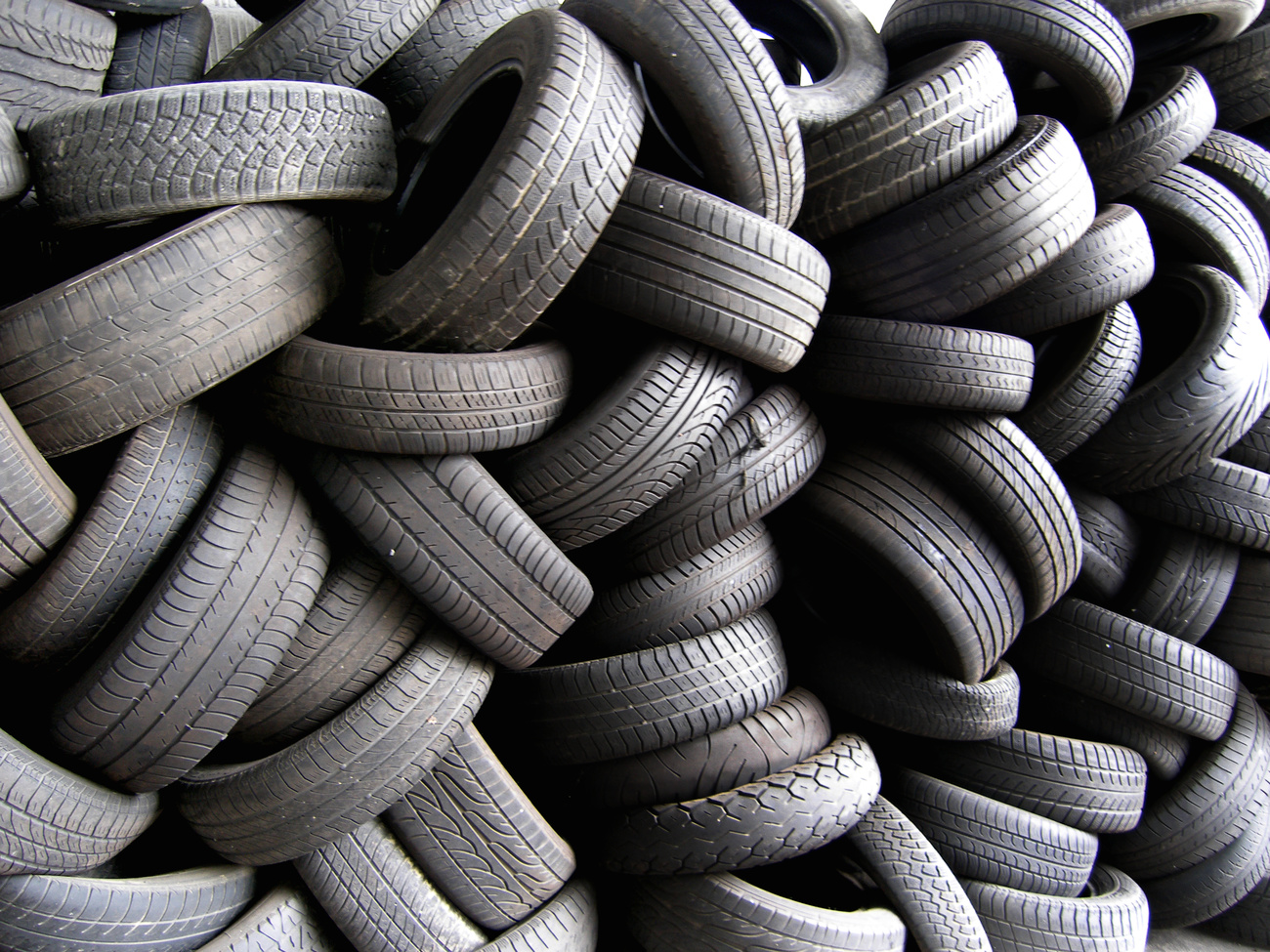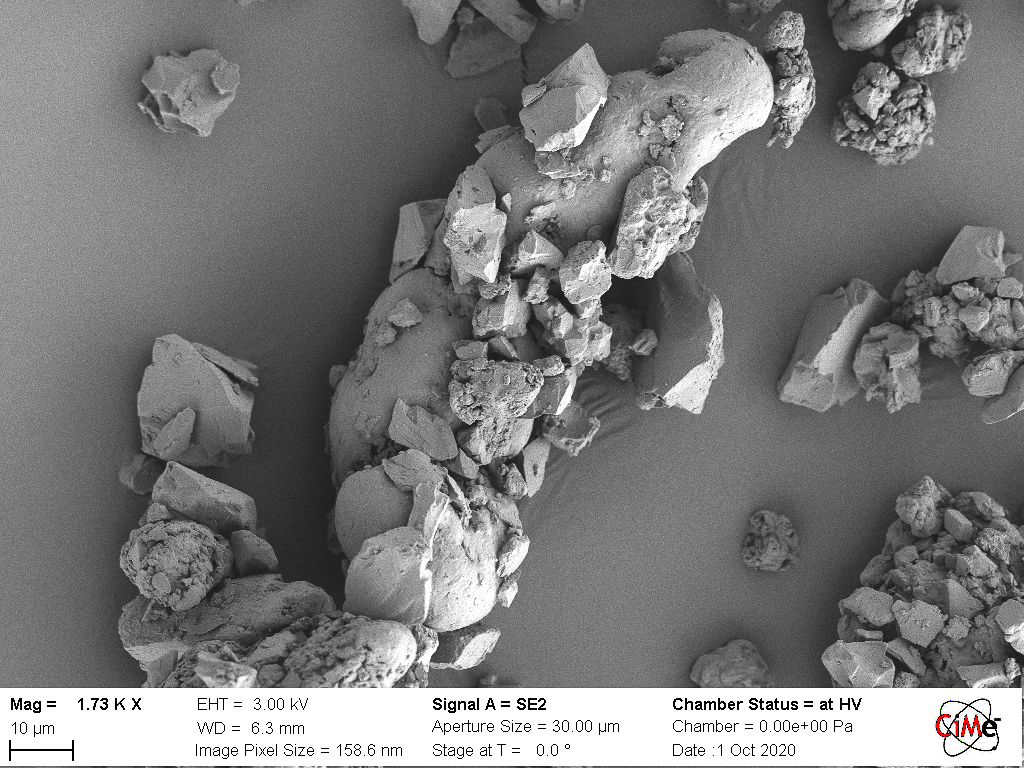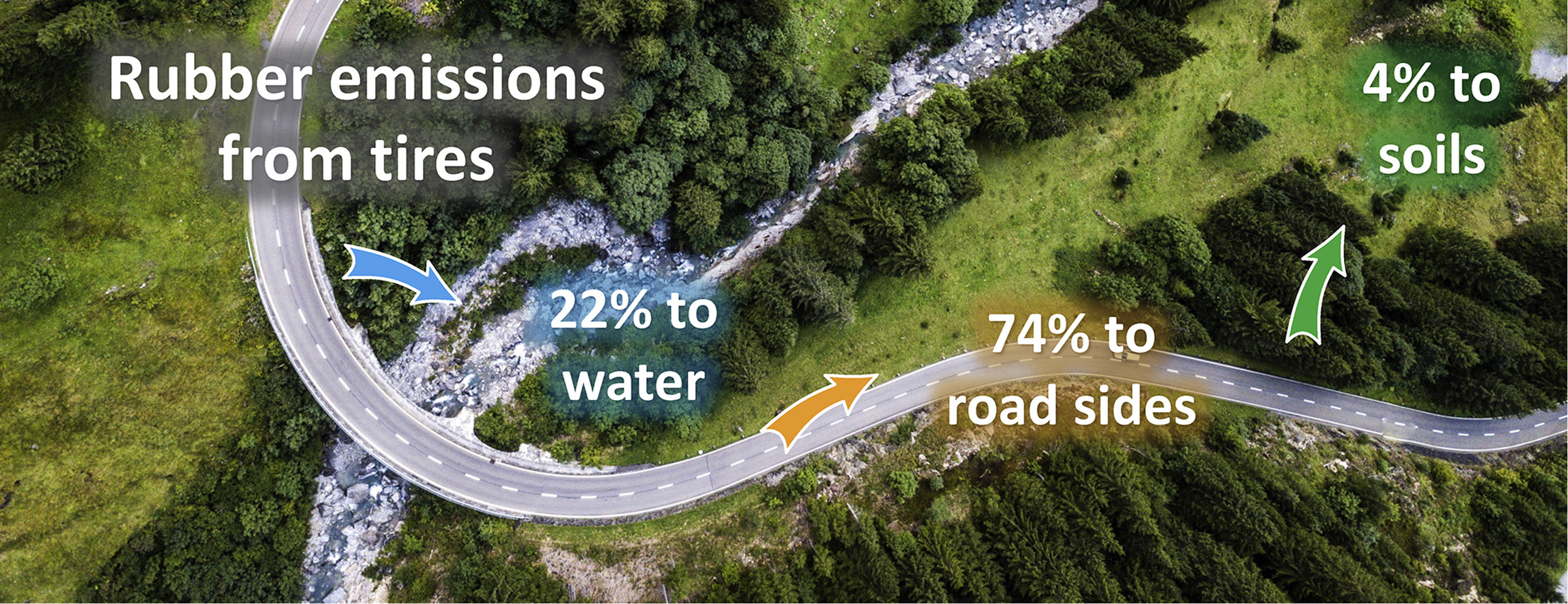
Polluting particles from car tyres – how worried should we be?

Our vehicles shed tyre particles every time we drive, and they’re everywhere. How do the microplastics affect our health and environment? Swiss researchers are among those trying to understand the risks.
Every time a car or truck accelerates or brakes hard, it’s highly likely that minute fragments of tyre – typically 2.5-40 micrometres in size – fall off and then get dispersed by rain and wind. Particles mainly end up in nearby soil. They also get mixed with highway runoff and finish in rivers and seas. Larger fragments may leach chemicals into the environment. But the smallest pieces and dust become airborne and can get inhaled into the lungs.
The problem with tyre wear particles is the same as for pesticides, says Ursula Schneider Schüttel, president of Switzerland’s oldest nature conservation group Pro Natura. “They are everywhere in the environment, and we can’t control where they go.”
An average car tyre loses 4kg of particles over its lifetimeExternal link and it is estimatedExternal link that a total of six million tonnes of tyre particles are released globally every year. In Switzerland, tyre abrasion is the largest source of microplastic in the environment (8,900 tonnes per year), according to the Federal Office for the EnvironmentExternal link. Over the past 30 years, 200,000 tonnes have accumulated, mostly in the ground.External link
While tailpipe and brake-dust emissions have been falling in recent years, those for tyre particles have been rising, driven by the trend for larger, more powerful cars. Regulators and politicians are being pressed about what to do about this microplastic pollution. We now have a much better idea of the scale and complexity of the tyre wear problem, but little is known about its implications on health and the environment. Researchers in Switzerland are working to try to understand them.
Toxic particles may move up food chain
During my visit to a tyre pollution research lab at Lausanne’s Federal Technology Institute (EPFL), colourful dishes of sand fly larvae and aquatic snails sit on tables waiting to be exposed to sediment containing ground particles and chemicals from a range of tyres. Using in-vitro techniques, researcher Florian Breider and his team measure the presence of certain tyre chemicals in animal tissue.

“This kind of pollution is definitely worth studying too,” Breider tells SWI swissinfo.ch, noting that although most research today focuses on microplastic pollution from packaging and waste, microplastics from tyres account for 30-40% of plastic pollution in the environment.
The 42-year-old environmental engineer oversees teams at the EPFL and two other Swiss institutes working on tyre toxicity research, sponsored by a consortium of tyre manufacturers.
Breider and his team especially want to know if and how particle contaminants are passed up the food chain from simple larvae to rainbow trout, and their toxicological effects.
During their initial work, published in 2021External link and 2022External link, they found that tyre particle compounds did not present an acute toxicity danger for rainbow trout. But work on the long-term impact continues.
“I can tell you that they’re toxic,” says Breider of tyre particles, according to his latest research findings. But he notes that the exact level of toxicity is not yet known because “we don’t have enough information”.

A simple car tyre is highly complex, containing around 400 different chemical compounds, according to Emissions Analytics, a UK firm that studies tyre wear. Some contain harmful chemicals such as polyaromatic hydrocarbons, benzothiazoles, isoprene, and heavy metals like zinc and lead.
Problematic 6PPD-quinone
One ingredient, 6PPD, a common compound used to stop tyres from ageing, appears to be particularly problematic when it oxidises and transforms into toxic 6PPD-quinone. The EPFL team is also studying this compound and its effects.
In 2020 researchers from the University of Washington in the United States found that 6PPD-quinone was linked to mass coho salmon deaths in Seattle’s Elliott Bay. In 2022 the university team published a new studyExternal link, which found that 6PPD-quinone was more toxic than previously calculated to coho and should be categorised as a “very highly toxic” pollutant for aquatic organisms. Similar findings have been observed in Canada and Australia.
But the chemical is likely already widespread. A December 2022 studyExternal link by Austrian scientists shows that lettuce plants readily take up 6PPD and 6PPD-quinone produced from car tyres. And in South China, scientists found in 2022 both 6PPD and 6PPD-quinone in the urine of adults and childrenExternal link, possibly caused by inhaling tyre dust.
“Considering that 6PPD-quinone was a lethal toxicant to multiple aquatic species, the potential human risks posed by its long-term exposure require urgent attention,” the Chinese authors wroteExternal link.
How tyre manufacturers are reacting
The Tire Industry Project (TIPExternal link) is a consortium of ten major tyre companies. It has commissioned and published almost 25 peer-reviewed scientific papers into tyre and road wear particles (TRWP) since 2005, including the work being done in Switzerland.
General assessments of the harmfulness of TRWP are mixed, according to the consortium. While some studies have suggested TRWP may have impacts on certain species, other research has indicated that TRWP are unlikely to pose significant risk to human health or the environment, says spokesperson Gavin Whitmore.
The US research findings into 6PPD-quinone in 2020 prompted TIP to expand its programme of sponsored research to better understand this newly identified chemical, he adds.
What’s being done in Switzerland?
In Switzerland, the Federal Office of Public Health and the Federal Roads Office refuse to comment on 6PPD or the wider issue of car tyre toxicity.
But it is unlikely federal agencies will take specific action on problematic tyre chemicals in the immediate future, says the Federal Environment Office, which is also following the tyre wear issue.
“Since vehicle tyres for the Swiss market are imported exclusively from abroad, a unilateral restriction of tyre additives in Switzerland would lead to significant barriers to trade and is therefore not realistic,” says spokesperson Dorine Kouyoumdjian.
In November 2022 the European Commission proposed tighter limitsExternal link for vehicle emissions and new standards for pollution from brakes and tyres. New limits for cars should be enforced from July 1, 2025.
Clarifications on the persistence and bioaccumulation of 6PPD are currently underway in the EU, but no restrictions are planned.
Switzerland is not a member of the European Union, but its chemicals legislation is harmonised with the 27-member bloc. In the Alpine country, microplastic pollution and tyre wear specifically, have been moving up the political agenda. Last year the government published a 62-page report into plastic pollution and the environment, which contains many references to tyre wear.
This summer the government should release a report on tyre wear pollution in reply to a question by Pro Natura’s Schneider Schüttel, who is also a parliamentarian. She wants the authorities to raise awareness and propose mitigation measures.
Schneider Schüttel supports the idea of expanding the existing network of road runoff treatment plants, which use natural and technical methods to remove tyre wear particles, treat the wastewater and filter out heavy metals on the busiest stretches of the motorway network.
(Watch video below to see how such treatment plants work).
The parliamentarian admits that the Swiss government’s room for manoeuvre to address tyre pollution is limited. “But it could at least ban certain problematic substances or encourage industry to use others that are less harmful,” she says.
“We can’t just talk about the plastic problem and how to eliminate plastic if we don’t consider the fact that largest part of microplastic comes from tyres.”
Edited by Sabrina Weiss/Veronica DeVore

More
Swiss-led research helps uncover new truths about air pollution

In compliance with the JTI standards
More: SWI swissinfo.ch certified by the Journalism Trust Initiative















![The four-metre-long painting "Sonntag der Bergbauern" [Sunday of the Mountain Farmers, 1923-24/26] had to be removed by a crane from the German Chancellery in Berlin for the exhibition in Bern.](https://www.swissinfo.ch/content/wp-content/uploads/sites/13/2025/12/01_Pressebild_KirchnerxKirchner.jpg?ver=a45b19f3)














You can find an overview of ongoing debates with our journalists here . Please join us!
If you want to start a conversation about a topic raised in this article or want to report factual errors, email us at english@swissinfo.ch.